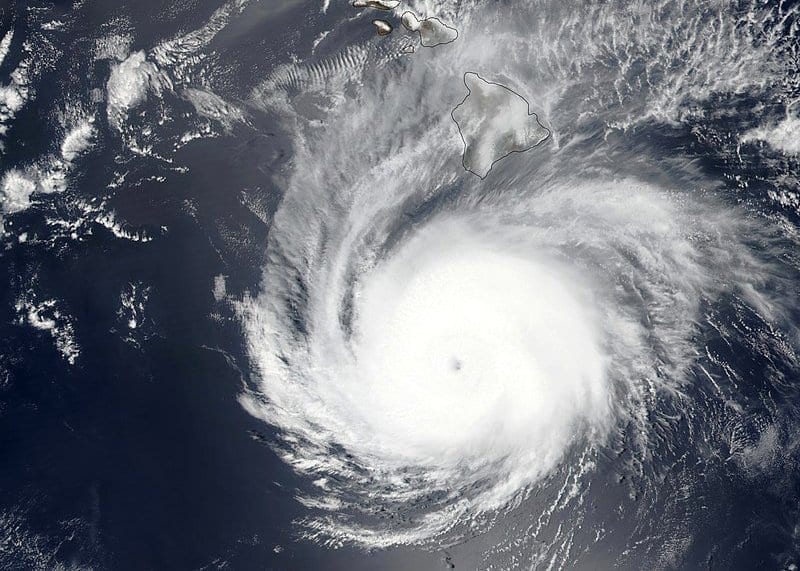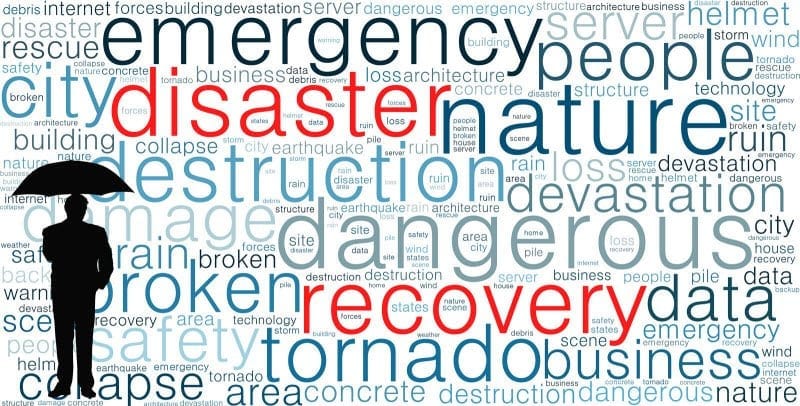
In the early morning hours of August 22, 2018, Hawaii experienced the unimaginable. Tropical Storm Lane, a small depression created off the Baja California coast, quickly evolved into a Category 5 Hurricane with sustained winds of 160 mph that headed directly towards Oahu. Hawaii’s geography and strong trade winds usually keep the storms away, but unusual weather patterns in the Central Pacific made it the strongest storm ever recorded in island waters. Residents and businesses emptied gas stations and store shelves when they faced the reality of a destructive storm that could cause widespread damage and cut off access to the rest of the world for months. Fortunately, the Hawaiian Islands dodged a major bullet when Hurricane Lane weakened to a tropical storm and pushed westward, but it wasn’t the only storm that was a close call for the state last year. Hurricane Olivia and other tropical storms had close calls with the islands weeks after, creating one of Hawaii’s busiest hurricane seasons on record.
This year’s hurricane season begins May 15th in the Pacific, so businesses need to know of the potential risk for natural disasters these next few months and prepare for possible building damage and any disruptions in phone and internet service. Below are five ways to help businesses develop a plan well before a storm arrives that gives businesses a much-needed peace of mind.
Keep Your People Safe
Employees are the most important asset for any business, and it’s important for them to be safe during any potential crisis. They will look to you for guidance, and you need to consider a few factors to keep them informed during natural disasters:
- Are employees located in one area or are they working remotely?
- Are there any employees traveling?
- Is there a way to contact every employee?
- Is there already an emergency notification system in place?
If outside conditions are too dangerous, business should notify employees and make sure they don’t travel by offering remote work options via a cloud-based system.
Back Up Your Data
Regardless of emergencies, all businesses need to back up all their data. Any loss of data, even if it’s small, can lead to catastrophe for business operations. Any business needs to have their data safely backed up offsite to prevent any on-site damages due to flooding, fires, or hurricane-force winds. This backup needs to be completed before a hurricane even appears on the weather radar. It’s even better for businesses to back up their data in multiple locations that are less prone to earthquakes, hurricanes, fires, or floods. If a storm is approaching your business, make sure someone tests access to all backup data copies beforehand.
Set Up Cloud Server
Files are not the only thing to lose during a natural disaster. Virtual Machines (VMs) that are the lifeline of employees and operate key systems, applications, CRMs, user settings, and customer contact info could perish in an on-site server damaged by flooding, fires, or hurricane-force winds. Cloud-based servers offer businesses a valuable backup solution for all their systems and programs with easy access from any location with an internet connection. Employees can even access all their important applications through a mobile device.
Establish Emergency Call Forwarding System
 Staying connected in a disaster is important to the safety of your employees, customers, and business operations. Access to phones or computers will be limited, so businesses need a virtual system that can be activated in case of emergencies. VoIP phone systems now offer call forwarding that directs calls to a designated person or allows employees to work from home or a secondary location. They can access messages from a cloud-based system, and even answer calls from their mobile devices with soft phone applications. Call forwarding is one of the most beneficial phone features for VoIP systems that makes sure no important calls slip through the cracks and everyone is updated in any emergency situation.
Staying connected in a disaster is important to the safety of your employees, customers, and business operations. Access to phones or computers will be limited, so businesses need a virtual system that can be activated in case of emergencies. VoIP phone systems now offer call forwarding that directs calls to a designated person or allows employees to work from home or a secondary location. They can access messages from a cloud-based system, and even answer calls from their mobile devices with soft phone applications. Call forwarding is one of the most beneficial phone features for VoIP systems that makes sure no important calls slip through the cracks and everyone is updated in any emergency situation.
Create Disaster Recovery Plan
Once businesses address these different areas, they need to create a detailed disaster plan that addresses how you can restore lost data during an emergency while maintaining operations. Every plan is different because of factors such as business size, type of industry, location, hardware/equipment, and organization structure. Each plan needs to designate responsibilities to key employees and what immediate steps needed for short- and long-term emergencies. Every plan should also address different disasters such as hurricanes, floods, earthquakes, and fires. Creating and testing these plans is a time-consuming process but will save businesses loads of money and headaches if a disaster arrives on their doorstep.
How We Can Help
Don’t know where to start? Servpac offers Hawaii businesses cloud-based VoIP phones, high speed fiber internet, and data storage to help them prepare for the Pacific hurricane season and other emergencies they encounter. Our locally renowned support and expertise will help your business develop a comprehensive disaster recovery plan that ensures your employees, hardware and data are always safe. Call 808-237-5000 or click below for a FREE Consultation from our local experts.
—
Servpac is Hawaii’s Cloud Solution. Started in 2004, Servpac has evolved from a telecommunications provider, to an all-in-one cloud-based technology solution for Hawaii businesses. Our suite of services range from cloud computing, data colocation, managed services, dedicated fiber internet and VoIP phone solutions. We focus on providing premium customer service and deliver world-class solutions that transform Hawaii’s technology landscape.


